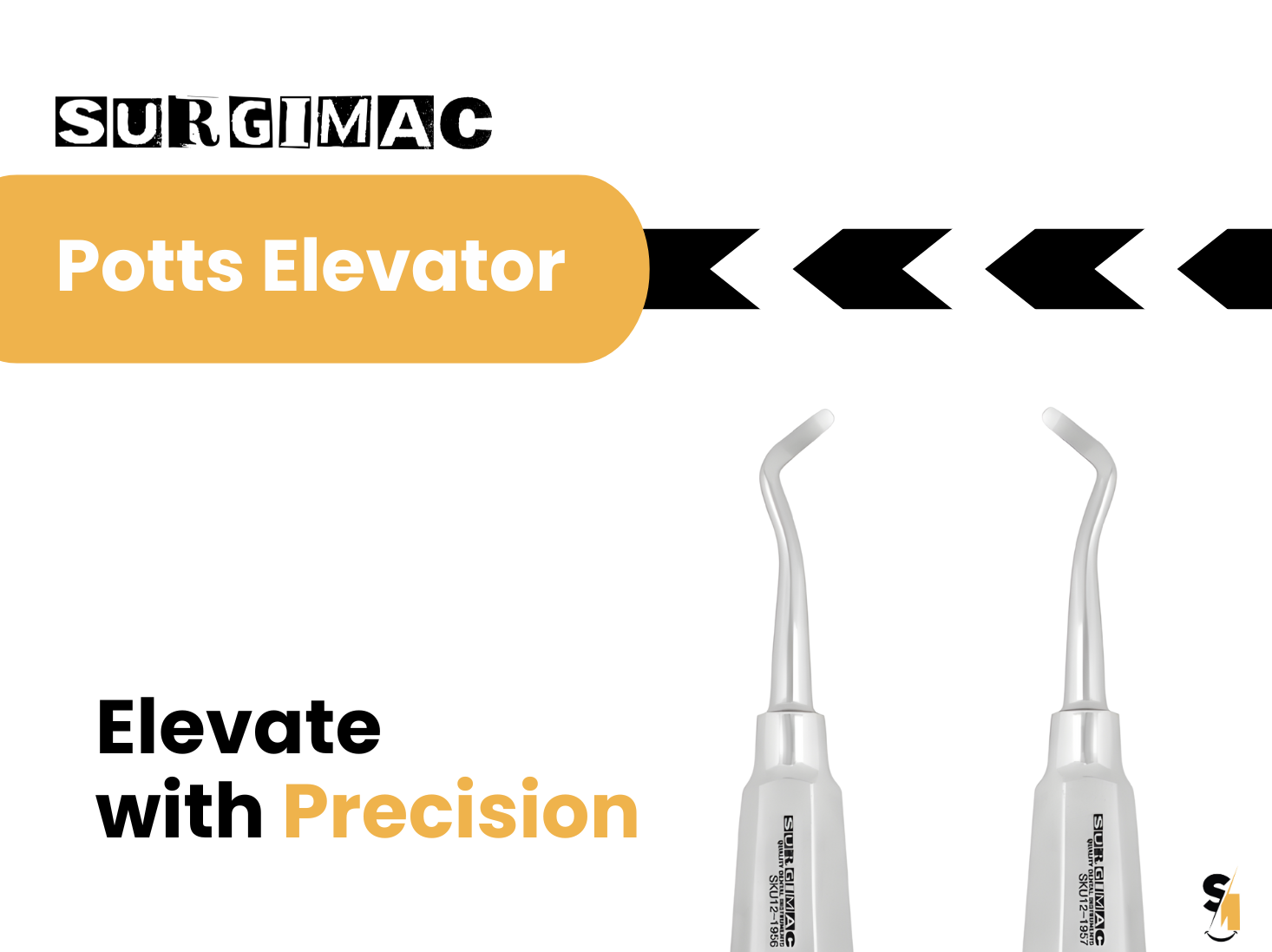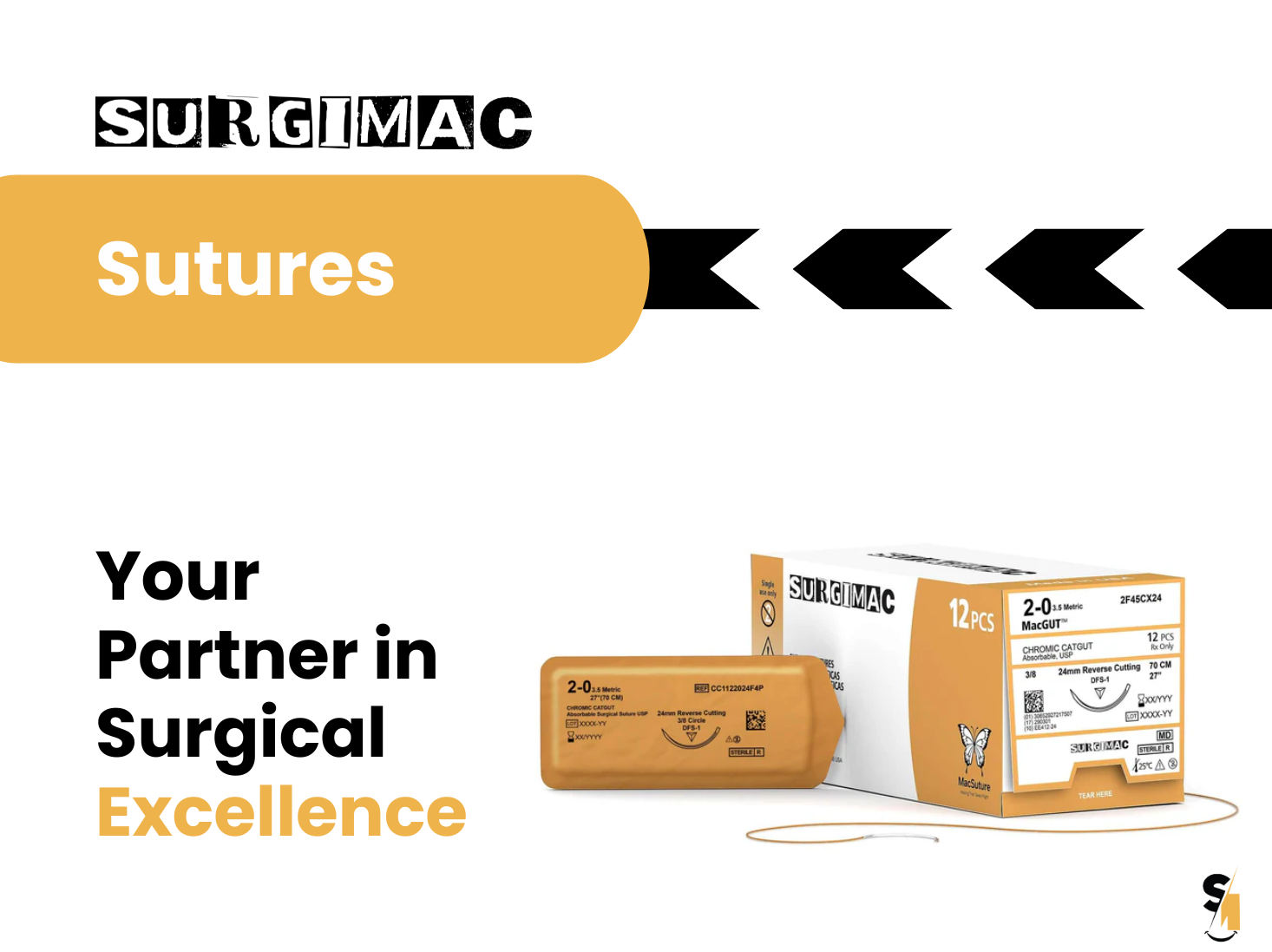Master Periodontal Care: Choosing Between Dental Curettes & Scalers. Confused about dental curettes vs. scalers? This guide breaks down the key differences in their tip shape, cross-section, and primary use for effective plaque and calculus removal. Learn about sickle scalers like SurgiMac's 204SD, Jacquette scalers, Gracey curettes, and universal curettes like the 13/14 Columbia. Understand why sharpness matters for patient comfort and treatment outcomes. Equip your practice with the right hand scaling instruments for optimal periodontal health. Explore SurgiMac's selection now!
Ever found yourself staring at your instrument tray, wondering the differences between curettes and scalers? An essential tool might seem like many others from afar, but the unique characteristics of each set apart by their definition can be the difference-maker in successful periodontal care.

Spotting the Difference: Curettes vs Scalers
Both curettes and scalers are designed to tackle plaque and calculus (that pesky tartar!), but they each have their own specialties:
-
Scalers: Think about these as the excavators of your dental products. With their pointed tip and triangular cross-section, they are good at tackling supragingival calculus – the stubborn deposits visible above the gum line. They're particularly adept at removing plaque and calculus from the tooth's crown and interdental spaces. Common types include sickle scalers, with their pointed tip and sharp cutting edges such as SurgiMac's 204SD Scaler, and Jacquette scalers, designed for interdental spaces which we will discuss later in detail such as SurgiMac's U-15 Towner/30 Jackuette Scaler
-
Curettes: These are the gentle explorers, that go just below the gum line to deal with subgingival calculus. Their rounded toe and semi-circular cross-section allow them to explore the delicate subgingival areas with finesse, removing hidden deposits and smoothing root surfaces. Gracey curettes, with their area-specific design, are masters of precision, while universal curettes offer versatility for various surfaces. SurgiMac offers universal curettes for your practice such as the 13/14 Columbia University Curette by Air Series, one of our finest brands when it comes to curettes.
Scalers: The Supragingival Specialists
Scalers are designed for the removal of supragingival calculus, the hard deposits that form on the visible surfaces of teeth. Their pointed tip and triangular cross-section make them ideal for this task.
Types of Scalers
-
**Sickle Scalers:** These are the efficient for supragingival scaling, featuring a pointed tip and two sharp cutting edges. They're effective for removing moderate to heavy calculus deposits from the facial and lingual surfaces of teeth.
-
**Anterior Sickle Scalers:** Designed for use on anterior teeth.
-
**Posterior Sickle Scalers:** To be used on posterior teeth with longer shanks and angled blades.
-
**Jacquette Scalers:** Made for interproximal spaces (between teeth), featuring a straight or slightly curved blade.
-
Hoe Scalers: These have a beveled blade and are used to remove heavy calculus deposits, often in combination with ultrasonic scalers.
-
Chisel Scalers: These feature a straight blade and are primarily used for removing supragingival calculus on anterior teeth.
-
Files: These instruments have multiple cutting edges and are used for smoothing rough surfaces or removing tenacious calculus.
Curettes: The Subgingival Explorers
Curettes are for subgingival calculus removal and root planing. They are designed with rounded toes and semi-circular cross-sections to travel along the delicate subgingival environment with precision.
Types of Curettes
-
**Gracey Curettes:** These are area-specific curettes designed to adapt to specific tooth surfaces. They have an offset blade and are ideal for fine scaling and root planing.
-
Anterior Gracey Curettes: Designed for anterior teeth.
-
Posterior Gracey Curettes: Adapted for posterior teeth with specific angles for different surfaces (mesial, distal, facial, lingual).
-
**Universal Curettes:** These curettes have a face perpendicular to the lower shank and can be used on all tooth surfaces. They offer versatility but may not provide the same level of precision as Gracey curettes.
-
After-Five Curettes: Similar to Gracey curettes but with a longer terminal shank, designed for deeper periodontal pockets.
-
Mini-Five Curettes: Smaller versions of Gracey curettes, ideal for accessing tight spaces or for use on pediatric patients.

Key Differences between Curettes and Scalers
| Feature Curettes Scalers |
| Tip Shape
|
Rounded |
Pointed |
| Cross-Section |
Semi-circular |
Triangular |
| Primary Use |
Subgingival calculus removal and root planing |
Supragingival calculus removal |
| Blade Angles |
Offset blade (Gracey curettes) |
Two cutting edges |
| Examples |
Gracey curettes, universal curettes, After-Five curettes |
Sickle scalers, Jacquette scalers, hoe scalers |
Why Sharpness Matters
You know how frustrating it is to work with a dull knife in the kitchen? Well, the same applies to your dental instruments. Dull instruments make your work challenging, cause your patients more discomfort, and even jeopardize your treatment outcome. That's why SurgiMac considers precision and sharpness our number one priority when it comes to scalers and curettes. Sharp curettes and scalers are critical for proper periodontal care. Dull instruments can:
-
Decrease efficiency: Use excess force and time to remove calculus.Increase patient discomfort: Such an action results in more tissue trauma and sensitivity.
-
Increase patient discomfort: Causing more tissue trauma and sensitivity.
-
Compromise treatment outcomes: Failing to completely remove calculus, potentially leading to disease progression.
Technique Matters Too
Proper techniques by both curettes and scalers should be used to optimize treatment results without complications. These include:
-
Adaptation: Properly adapting the instrument to the tooth surface to avoid any tissue damage.
-
Angulation: Offers maximum angulation for performing the calculus removal procedure.
-
Stroke: A controlled and overlapping stroke is used to ensure proper cleaning.
Curettes and Scalers: Why They Matter?
Curettes and scalers are of prime importance in the prevention and treatment of periodontal disease, which is a chronic inflammatory disease affecting the gums and other supporting structures of the teeth. Such instruments thus enable effective clearance of plaque and calculus.
-
Prevent gingivitis: Early stage gum disease characterized by inflammation and bleeding.
-
Control periodontitis: Advanced gum disease that can lead to tooth loss and other health complications.
-
Promote overall health: It was also found that periodontal disease is associated with other systemic conditions, like heart disease, diabetes, and stroke. In addition, patients have used curettes and scalers for good oral health in return for healthier lives.
Choosing the Right Tool for Your Practice
Selecting the appropriate curettes and scalers is essential for achieving best results and ensuring patient comfort during dental procedures. SurgiMac recognizes the importance of providing a diverse selection to meet the unique needs of every dental professional. Our comprehensive range of curettes and scalers are carefully crafted for precision, durability, and ergonomic comfort. We understand that the right tools can significantly enhance your efficiency and the quality of care you provide.
Frequently Asked Questions
What is the difference between curettes and scalers?
Both curettes and scalers are designed to remove plaque and calculus from teeth, but they have key differences:
-
Shape: Curettes have a rounded toe and a semi-circular cross-section, making them ideal for working below the gumline (subgingival) and adapting to the curves of the tooth. Scalers have a pointed tip and a triangular cross-section, better suited for removing deposits from the visible parts of the teeth (supragingival).
-
Function: Curettes are primarily used for subgingival calculus removal and root planing, smoothing the root surfaces to promote healing and prevent further gum disease. Scalers are primarily used for supragingival calculus removal, focusing on the visible parts of the teeth.
-
Application: Curettes are typically used for finer, more delicate procedures below the gumline, while scalers are used for heavier calculus removal above the gumline.
How do you use scalers and curettes?
Proper technique is crucial for both instruments:
-
Adaptation: The instrument should be adapted closely to the tooth surface to avoid tissue damage.
-
Angulation: The correct angle between the blade and the tooth is essential for effective calculus removal.
-
Stroke: Use controlled and overlapping strokes to ensure thorough cleaning.
-
Lateral Pressure: Apply firm but controlled lateral pressure against the tooth to engage the calculus deposit.
What are two basic types of curettes?
-
Gracey Curettes: Area-specific curettes designed with an offset blade to adapt to specific tooth surfaces. They are ideal for fine scaling and root planing.
-
Universal Curettes: These curettes can be used on all tooth surfaces, offering versatility.
You can explore a vast collection of SurgiMac's Hand Scaling Instruments by clicking here: Hand Scaling Instruments
What is a Gracey curette used for?
Gracey curettes are specialized instruments designed for subgingival calculus removal and root planing. Their unique design allows for precise adaptation and effective removal of calculus deposits below the gumline, promoting healing and preventing further attachment loss.
Why is proper sterilization of curettes and scalers important?
Proper sterilization is crucial to prevent the transmission of infections between patients. These instruments come into contact with blood and saliva, which can harbor various pathogens. Sterilization eliminates these microorganisms, ensuring that the instruments are safe for use.
How often should I sharpen my curettes and scalers?
Sharpening your curettes and scalers regularly is essential to maintain their effectiveness and prolong their lifespan. Ideally, you should sharpen your instruments after each use, or at least once a day, depending on the volume of patients you see. Sharp instruments require less force to remove calculus, reducing the risk of burnishing the deposit and causing patient discomfort.
What are the benefits of using ergonomic curettes and scalers?
Ergonomic curettes and scalers are designed to promote proper hand positioning and reduce strain on the muscles and joints of the hand and wrist. This can help to prevent hand fatigue, carpal tunnel syndrome, and other musculoskeletal disorders that are common among dental professionals. Ergonomic instruments can also improve efficiency and precision, allowing for more comfortable and effective scaling and root planing.
How do I choose the right curette or scaler for a specific procedure?
Choosing the appropriate curette or scaler depends on several factors:
-
Location of Calculus: Determine whether the calculus is located supragingivally (above the gumline) or subgingivally (below the gumline).
-
Tooth Surface: Consider the specific tooth surface being instrumented. Gracey curettes are area-specific, while universal curettes can be used on all surfaces.
-
Accessibility: Evaluate the accessibility of the area.
-
Patient Factors: Consider the patient's age and oral health status.
-
Personal Preference: Ultimately, the best instrument is the one that feels comfortable and effective in your hands.
Useful Links
General Information and Resources
-
The Battle of the Dental Instruments - Understanding the Key Differences Between Dental Curettes and Scaler
-
Periodontal instrument characteristics - LM Dental
Instrument Maintenance and Routine Care
The Importance of Routine Care and Maintenance for Dental Equipment - Eclpise Dental
Choosing the Right Instruments
Explore some of the Curettes and Scalers by SurgiMac
SurgiMac Scalers and Curettes









